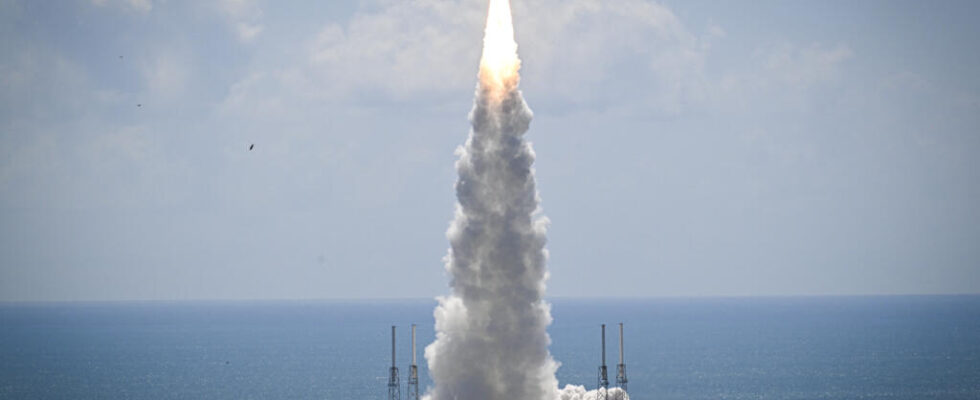Boeing has finally done it. This Wednesday, June 5, the Starliner spacecraft took off from Florida with the International Space Station as its destination. The mission should allow the American company to extend the list of vessels capable of transporting humans into space, but not only that. After numerous disappointments regarding the takeoff of Starliner and scandals concerning the safety of its planes, Boeing is playing up its image.
4 mins
Boeing’s Starliner spacecraft finally took off on Wednesday from Florida towards the International Space Station with, for the first time, astronauts on board. A mission which should make it possible to extend the short list of space vehicles transporting human beings. After years of successive postponements and two takeoff attempts canceled at the last moment in one monthBoeing must demonstrate during this test flight that Starliner is safe to begin regular operations, although four years behind SpaceX, which already transports NASA astronauts to the Space Station (ISS) since 2020.
The takeoff of the ULA group’s Atlas V rocket, with the Starliner capsule at its top, took place at 10:52 a.m. (2:52 p.m. UT) from Cape Canaveral in Florida. NASA astronauts Butch Wilmore and Suni Williams, two veterans of thespace, form the crew. “ Suni and I are honored to share this dream of spaceflight with each of you “, said Butch Wilmore, the mission commander, a few minutes before takeoff. The two astronauts must spend a little over a week in the International Space Station, then always return aboard Starliner.
The spacecraft is scheduled to dock with the ISS approximately 24 hours after launch, around 4:15 p.m. UT on Thursday. It carries with it an unexpected cargo, added at the last minute: a new pump for the system for recycling astronauts’ urine into water in the ISS. The pump on board recently stopped working and urine must be stored in tanks in the meantime, but these capacities are limited.
Boeing plays big
The third takeoff attempt was therefore successful. Twice, at the beginning of May and then last week, takeoff was canceled at the last moment, even though the astronauts had already taken their places on board and the rocket was filled with fuel. The culprits were first a valve problem on the rocket, then a problem with the electricity supply to one of the computers on the ground.
A small helium leak on one of the Boeing spacecraft’s thrusters also led to additional analysis time, but it was ultimately decided not to repair it before the flight, as it did not represent a danger according to The NASA.
Boeing, also shaken by safety problems on its planes, is also gambling on its reputation with this mission. The development of Starliner was marred by multiple disappointments. After a first failed uncrewed test flight in 2019, the empty vehicle only managed to reach the ISS in May 2022. Other problems discovered subsequently – on the parachutes braking the capsule during its return to the atmosphere, or even flammable adhesive tape that had to be removed from the interior of the vehicle – further delayed its first crewed flight.
Also listenBoeing in turbulence zone
This is essential for Starliner to obtain the coveted NASA certification. Only a handful of American ships have carried astronauts in the past. After the shutdown of the American space shuttles in 2011, NASA astronauts had to travel aboard Russian Soyuz spacecraft. It was to put an end to this dependence that in 2014, the American space agency signed a contract with Boeing and SpaceX for the development of new vessels.
Once Starliner is operational, NASA wants to alternate between SpaceX and Boeing flights. Since the beginning of space exploration, only a handful of ships have had the honor of carrying humans. After taking off on Wednesday, Boeing’s Starliner vessel joins this very exclusive club. Russia and China each have a ship allowing them to send humans into orbit. But in the history of American spaceflight, this is only the sixth time that NASA astronauts have inaugurated a new spacecraft.
